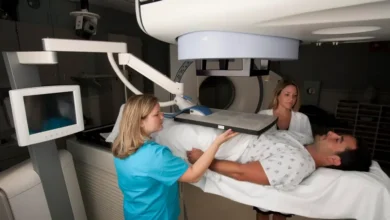How eyes could reveal early signs of health risks

Imagine suddenly experiencing double vision with no prior injuries or trauma, just like Melissa, a 30-year-old educator, who faced this unsettling symptom. A few months earlier, she had noticed brief blurriness in one eye but brushed it off as fatigue from too much screen time. After undergoing basic and advanced eye tests, her symptoms pointed to multiple sclerosis. A neuro-ophthalmologist confirmed the diagnosis, and Melissa began treatment right away.
Melissa’s story isn’t unusual. Langis Michaud, an optometrist with 30 years of experience, explains in an article for The Conversation that many patients discover underlying health conditions through eye-related symptoms. As a professor at the Université de Montréal’s School of Optometry, Michaud emphasises teaching students to identify how eye issues can indicate broader health problems and to work closely with healthcare professionals to ensure patients receive proper care.
Early diabetes screening and eye health
With diabetes expected to affect nearly 8% of the population by 2030, early screening is essential. However, diabetes is often diagnosed 6 to 13 years after it begins. An eye exam can help detect the disease sooner, as characteristic lesions may appear at the back of the eye before other symptoms develop.
Early diagnosis is critical within five years of detection, 25% of patients with Type 1 diabetes and 40% of those with Type 2 diabetes treated with insulin may develop vision-threatening eye lesions. Timely identification and regular monitoring can greatly lower the risk of blindness caused by untreated diabetes.
High blood pressure and cholesterol in eyes
High blood pressure and high cholesterol often go unnoticed, yet they pose serious risks for heart disease and stroke. Surprisingly, the eyes can reveal early signs of these conditions without invasive procedures. The eye’s blood vessels are visible, offering a unique window into vascular health.
High blood pressure, often called the “silent killer,” may show signs like vessel narrowing or damage in the retina. Similarly, high cholesterol can lead to visible cholesterol deposits within blood vessels, known as Hollenhorst plaques, or appear as lipid arcs in the cornea and yellowish patches (xanthelasma) around the eyes. Because symptoms may be subtle or progress gradually, many patients mistake them for normal changes. Regular eye exams can help detect these issues early, prompting timely intervention.
Glaucoma: The silent vision thief
Glaucoma, a silent optic nerve disease, often progresses without symptoms. It’s typically caused by high eye pressure from excess aqueous humour or drainage issues, leading to gradual nerve fibre loss and narrowing of the visual field. By the time vision loss becomes noticeable, significant nerve damage may have occurred, often irreparable. Chronic glaucoma can result from ocular issues or medications like cortisone.
Normotensive glaucoma, however, occurs with normal eye pressure and is linked to low blood pressure or conditions like sleep apnea. Patients with this type need a thorough medical evaluation for underlying causes.
How cancer can be detected through eye exams
Cancer, often called the disease of the century due to its widespread nature, can also affect the eyes, such as in retinoblastoma, and may spread to other organs like the lungs and liver. Many cancers, including those affecting the eye, develop without symptoms, making early detection crucial for survival.
Certain retinal pigment abnormalities, like those shaped like a bear’s paw, can be linked to colon cancer, which has a poor prognosis if left untreated. Visual field tests can reveal issues that patients may not notice or think are minor but could indicate serious conditions like brain tumours or nerve compression.
Symptoms like abnormal eye movements, unequal pupil responses, sudden reading difficulties, or double vision are red flags that require thorough eye and neurological examination. The eyes serve as a window into overall health, making regular optometrist visits essential, even without symptoms, to detect and address potential health issues early.









